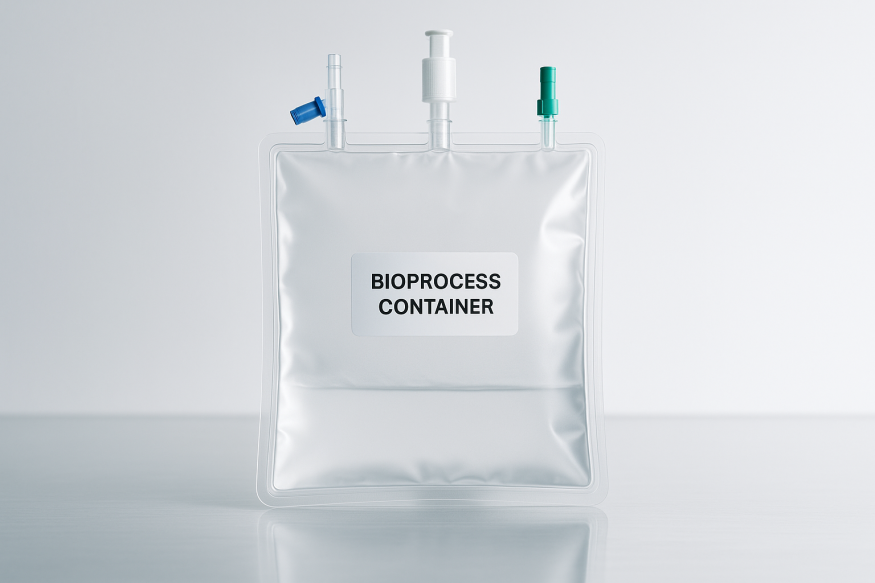
In the realm of bioprocessing, maintaining health and safety is paramount. The use of advanced bioprocess containers is a critical strategy in achieving this goal. These containers are designed to prevent cross-contamination, thereby safeguarding both the research and the personnel involved. This article explores how bioprocess containers contribute to improving health and safety standards in biotech labs.
Ensuring a sterile environment in biotech labs is vital for maintaining the integrity of experimental results. Advanced bioprocess containers play a key role in minimizing contamination risks. By utilizing innovative container technologies, labs can significantly enhance their safety protocols. ALLpaQ Packaging Ltd offers solutions that align with these needs.
The Role of Sterility in Health and Safety
Maintaining sterility is essential for ensuring the health and safety of laboratory environments. Any breach in contamination control can lead to compromised experiments and potential health risks for lab personnel. Laboratories must adhere to strict protocols to ensure all environments are free from contaminants. Implementing single-use bioprocess containers is a crucial step toward achieving this goal.
Single-use containers significantly reduce the risk of cross-contamination compared to traditional reusable systems. They eliminate the need for cleaning processes that can introduce human error and potential contaminants. Moreover, these containers are designed to be disposed of after a single use, ensuring that no residual materials or microorganisms are left behind. This approach aligns with industry standards that prioritize sterility and efficiency, ultimately enhancing health and safety.
Modern bioprocess containers incorporate advanced materials that actively resist microbial growth and prevent particle generation. These materials undergo rigorous testing to ensure they meet stringent regulatory requirements for biocompatibility and sterility assurance. The implementation of such high-grade materials significantly reduces the risk of product contamination while providing a safer working environment for laboratory personnel. Additionally, these containers often feature tamper-evident seals and integrity indicators that provide visual confirmation of sterility maintenance throughout the storage and handling process.
Enhancing Safety with Advanced Bioprocess Containers
Advanced bioprocess containers are engineered to enhance safety protocols within biotech labs. Their design caters to preventing contamination while maintaining operational efficiency. One major advantage is their ability to support aseptic workflows through integrated features such as sterile connectors and filters.
These containers often come pre-sterilized, ensuring an immediate reduction in potential contaminants upon arrival at the lab. This feature minimizes preparation time and allows researchers to proceed with confidence that their materials remain uncontaminated throughout the process. As a result, labs can maintain higher productivity levels without sacrificing quality control measures, thereby improving overall health and safety.
The latest generation of bioprocess containers incorporates sophisticated monitoring systems that can track critical parameters such as temperature, pressure, and oxygen levels in real-time. These smart features enable early detection of potential safety breaches and allow for immediate corrective actions. Furthermore, ergonomic design elements reduce the risk of handling errors and physical strain on laboratory staff, while robust construction materials minimize the likelihood of container failures during critical processes. This comprehensive approach to safety engineering demonstrates how modern container solutions actively contribute to workplace safety protocols.
Techniques for Maintaining a Sterile Environment
Maintaining sterility requires adherence to practical techniques alongside using advanced container solutions. Regular staff training on contamination prevention and proper handling procedures is critical for upholding health and safety standards in biotech labs.
Routine checks of laboratory equipment complement these efforts by identifying potential sources of contamination early. Environmental monitoring systems provide real-time data on conditions within lab spaces, allowing swift action if irregularities are detected. Such proactive measures are integral in supporting the efficacy of bioprocess containers and ensuring a safe working environment.
The Future of Bioprocess Containers in Health and Safety
The future landscape of biotech laboratories will likely see continued innovation in container technology as demands for higher health and safety standards increase. The focus will shift towards developing even more sophisticated designs capable of addressing emerging challenges in contamination control.
As researchers push boundaries within biotechnology fields, so too will the capabilities of bioprocess containers evolve to meet new needs. Collaborative efforts between scientists and manufacturers aim at creating next-generation solutions tailored specifically for unique lab requirements.
This evolution promises not only improved safety but also greater efficiency across research processes globally. As advancements continue, choosing appropriate container solutions becomes an essential consideration for any forward-thinking laboratory looking to excel amidst evolving scientific landscapes.
© 2025 ScienceTimes.com All rights reserved. Do not reproduce without permission. The window to the world of Science Times.










